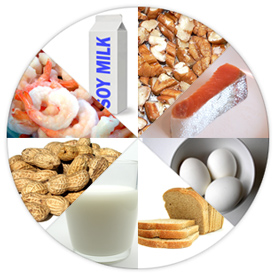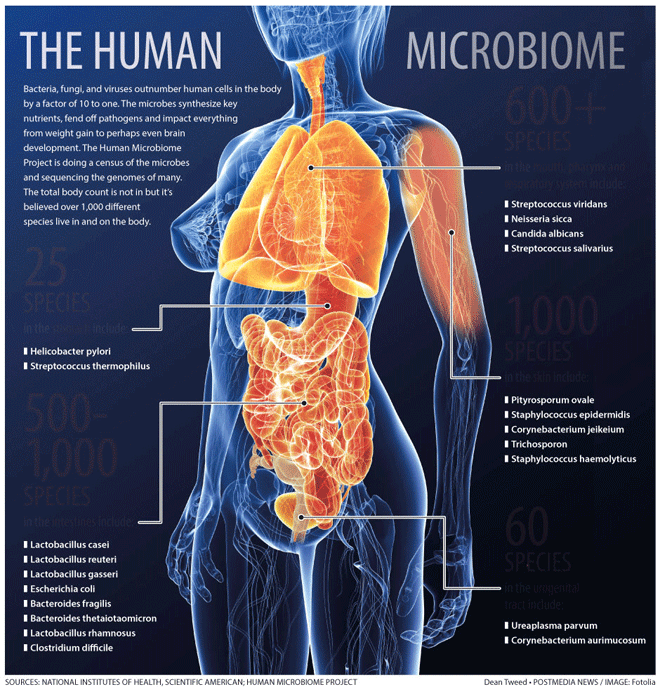One question that comes up a lot with regards to the safety of genetically engineered crops is whether or not they might produce allergens. The concern is that, by moving genetic material from one organism to another, an allergen might inadvertently be moved from one organism to another as well, or that the process might introduce entirely new allergens. The purpose of this article is to communicate the precautionary measures taken to ensure that this isn’t an issue, and to explain why allergens are no more likely to be an issue with GE plants than with non-GE plants (and probably even less so).
First off, what is an allergen? In the simplest terms, an allergen is any substance (antigen) which provokes an allergic reaction, and an allergic reaction is just an overly vigorous immune response to a perceived threat to the body that would not otherwise be harmful.
More specifically, it’s any antigen capable of provoking an Immunoglobulin E (IgE) antibody response in predisposed (atopic) individuals. Virtually all ingested allergens are specific proteins.
 That said, if a gene is borrowed from a plant that produces a known allergen, then that makes the allergen far easier to find during subsequent allergen testing, which comprises a sizable fraction of the GMO safety research that is done. Generally what GM seed companies do is screen each gene they’re considering using against known allergens, and then discard ones that are similar.
That said, if a gene is borrowed from a plant that produces a known allergen, then that makes the allergen far easier to find during subsequent allergen testing, which comprises a sizable fraction of the GMO safety research that is done. Generally what GM seed companies do is screen each gene they’re considering using against known allergens, and then discard ones that are similar.
This Slate article discusses the database of known allergens against which the new proteins in GMO’s are checked:
The following Grist article by Nathanael Johnson outlines the 3 layers of testing to which they are subjected, and here are some examples of such studies. Also, according to FDA regulations, having a GM that produces an allergen requires a mandatory label.
Consequently, whenever such a company enters into FDA consultation, taking a gene from a known allergenic species triggers a follow up investigation into whether or not the gene introduced is one of those allergens.
As a matter of fact, that’s precisely how the famous Brazil Nut gene was found in Soy.
This was discovered in an industry-funded study in Madison, WI. It was published and included in the GENERA database link hyper-linked earlier, but here is a direct link as well.
Subsequently, they can determine whether or not it actually triggers an allergic response via pinprick tests and food challenges.
However, another concern that has been raised in the past is the possibility of inadvertently producing a new allergen that nobody would know to even test for, (however improbable that might be), or that the new protein will signal greater production of an already existing allergen in the food which was previously produced at sufficiently small endogenous levels that it wasn’t ever a problem before.
While it is theoretically possible to introduce a new allergen this way, here’s the problem with that line of reasoning insofar as it has been applied as an indictment against GE technology:
See, one of the advantages of genetic engineering is that it permits scientists to isolate a specific gene and understand which proteins it produces before going on to test its interactive effects within a plant into which it is later inserted. (See here, here and here for a more detailed explanation of that process).
What this means is that the potential for introducing previously-unknown allergens into new foods is actually much less likely to slip our notice in the case of GE than for other common methods, such as selective breeding, radiation mutagenesis and hybridization, all of which shuffle around hundreds or even thousands of alleles which are not tracked, and the end product of which is subjected to little or no scientific screening process at all, despite possessing a higher inherent likelihood of producing unintended consequences.
As a matter of fact, that HAS happened with the Kiwi fruit (from woody vine species of the genus Actinidia), for which genetic engineering was not involved, and which you can read about here. By contrast, there are no confirmed cases of this ever happening in the case of Genetically Engineered foods.
Thus, although no precautionary measures available to us would 100% ensure that this could never happen, it’s at least as likely (if not more so) with non-GE methods than with GE. Therefore, unless one is prepared to use the same argument to chastise literally every other known form of artificial selection in plant cultivation, then the claim represents a biased asymmetric application of the precautionary principle that is not based on a sound comparative risk-benefit analysis.
Despite that double standard, the testing for such allergens has been quite extensive nevertheless, and has received close attention from regulatory bodies, as you can read even more about here. (Additional references and links are supplied therein):
It’s also worth noting that some scientists are working on finding ways to use genetic engineering to actually reduce allergies: a goal with which they are already having some success (as Dr. McHughen explains here):
So there you have it. Contrary to the claims of biotechnology opponents, the risks of introducing allergens into the food supply are (at worst) no greater than with older cultivation methods, and are most-likely much lower, yet are tested far more carefully than foods that have come about via any of those other methods.
Feel free to check out my facebook page, the Credible Hulk.
*This was cross posted on Reaper Nation in affiliation with Tombstone da Deadman.



3 Comments
fiverr eebest8 · July 27, 2015 at 12:41 am
Very good article.Really looking forward to read more. Cool.
batidos para bajar de peso mas rapido · October 20, 2016 at 11:02 pm
YT
Mandatory GMO Labeling Opposition: Not just for Shape-Shifting MonSatan Cyborg Super-Shills from the future – The Credible Hulk · May 15, 2016 at 8:05 pm
[…] For instance, considering how thoroughly biotech opponents have flooded the internet with propaganda against GE foods, it could easily be misinterpreted as a warning. It would mislead people into thinking it denoted some kind of pertinent difference in safety and/or nutrition between GE foods, conventional and organic foods, when that is simply not the case. Mandatory labeling proponents like to respond to this with a slippery slope rebuttal in which they imply that this point is comparable to opposing ingredient labels, macro-nutrient breakdowns, or allergen warnings, but those are flawed comparisons. Genetic engineering is a process: not an ingredient, and unlike GE food labeling, labeling for ingredients, allergens and nutritional content, actually DOES convey information pertinent to nutrition and safety. From an objective scientific point of view, breeding method is irrelevant to health and safety. As a side note, GE food opponents sometimes use the possibility of new allergens as an argument against the technology, but I’ve already deconstructed that claim here. […]
Comments are closed.